Themed collection Environmental Science: Nano Cover Art

Platform selection of engineered nanomaterials for water decontamination applications
Strategic pairing of engineered nanomaterials to platforms will advance safe and effective deployment of nano-enabled water decontamination.
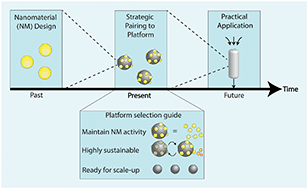
Environ. Sci.: Nano, 2020,7, 3641-3654
https://doi.org/10.1039/D0EN00786B
Opportunities and challenges of phyto-nanotechnology
Phyto-nanotechnology has received dramatically increasing attention in recent years. In this perspective, we have summarized some promising applications of phyto-nanotechnology as well as major obstacles with our insights into in this dynamic area.

Environ. Sci.: Nano, 2020,7, 2863-2874
https://doi.org/10.1039/D0EN00729C
Opportunities for nanotechnology to enhance electrochemical treatment of pollutants in potable water and industrial wastewater – a perspective
An international workshop identified how pore structures and unique properties that emerge at nano- to sub-nano- size domains can improve the energy efficiency and selectivity of electroseparation or electrocatalytic processes for treating water.
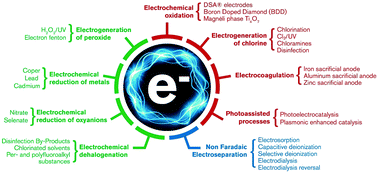
Environ. Sci.: Nano, 2020,7, 2178-2194
https://doi.org/10.1039/D0EN00194E
Emerging investigator series: calculating size- and coating-dependent effect factors for silver nanoparticles to inform characterization factor development for usage in life cycle assessment
Concerns about the environmental impacts due to the end of life for engineered nanomaterials (ENM) are growing.
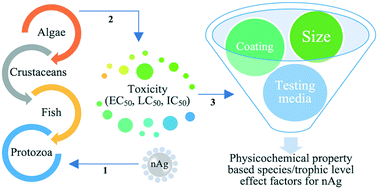
Environ. Sci.: Nano, 2020,7, 2436-2453
https://doi.org/10.1039/D0EN00675K
The gut barrier and the fate of engineered nanomaterials: a view from comparative physiology
Despite the diverse structures and functions of the gut barrier in the animal kingdom, some common features of gut lumen chemistry control the behaviour of engineered nanomaterials, and with some potentially novel uptake pathways in invertebrates.
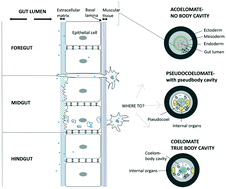
Environ. Sci.: Nano, 2020,7, 1874-1898
https://doi.org/10.1039/D0EN00174K
Rapid organic solvent extraction coupled with surface enhanced Raman spectroscopic mapping for ultrasensitive quantification of foliarly applied silver nanoparticles in plant leaves
An organic solvent-based extraction approach coupled with surface enhanced Raman spectroscopic mapping technique to quantify silver nanoparticles in spinach leaf.
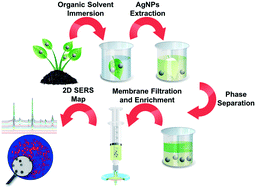
Environ. Sci.: Nano, 2020,7, 1061-1067
https://doi.org/10.1039/C9EN01246J
Electrostatic polyester air filter composed of conductive nanowires and photocatalytic nanoparticles for particulate matter removal and formaldehyde decomposition
A dual-functional polyester fibrous air filter composed of self-assembled TiO2 nanoparticles and percolated Ag nanowires for electrostatic particulate matter removal and photocatalytic formaldehyde decomposition is reported.
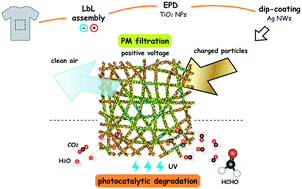
Environ. Sci.: Nano, 2020,7, 3746-3758
https://doi.org/10.1039/D0EN00683A
Accumulation of phenanthrene and its metabolites in lettuce (Lactuca sativa L.) as affected by magnetic carbon nanotubes and dissolved humic acids
Accumulation and metabolites of phenanthrene in lettuce as affected by magnetic carbon nanotubes and dissolved humic acids were investigated under hydroponic conditions.
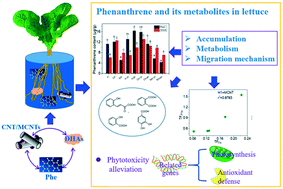
Environ. Sci.: Nano, 2020,7, 3759-3772
https://doi.org/10.1039/D0EN00932F
Revealing the structures and relationships of Ca(II)–Fe(III)–AsO4 minerals: arseniosiderite and yukonite
The poor crystallinity of As(V) minerals such as arseniosiderite and yukonite has made a detailed understanding of their structures elusive. Therefore, these were probed by pair distribution function analysis and transmission electron microscopy.
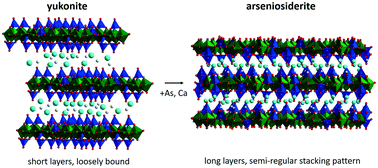
Environ. Sci.: Nano, 2020,7, 3735-3745
https://doi.org/10.1039/D0EN00503G
The fabrication of 3D hierarchical flower-like δ-MnO2@COF nanocomposites for the efficient and ultra-fast removal of UO22+ ions from aqueous solution
3D flower-like δ-MnO2@TpPa-1 composites was constructed though the integration of δ-MnO2 nano-flowers with a covalent organic framework (TpPa-1) via ultrasonication process. δ-MnO2@TpPa-1 a promising adsorbent for spent-nuclear-fuel reprocessing.
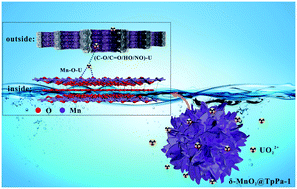
Environ. Sci.: Nano, 2020,7, 3303-3317
https://doi.org/10.1039/D0EN00793E
Nanoparticle size and natural organic matter composition determine aggregation behavior of polyvinylpyrrolidone coated platinum nanoparticles
Engineered nanoparticle (NP) size and natural organic matter (NOM) composition play important roles in determining NP environmental behaviors.
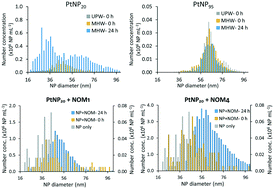
Environ. Sci.: Nano, 2020,7, 3318-3332
https://doi.org/10.1039/D0EN00659A
Synergistic effects of lanthanide surface adhesion and photon-upconversion for enhanced near-infrared responsive photodegradation of organic contaminants in wastewater
Upconversion nanoparticle-TiO2 catalyst with Gd3+-rich surface shows stronger binding coefficiency to the carboxyl groups, resulting in faster ring cleavage and higher mineralization efficiency of rhodamine B under NIR light irradiation.
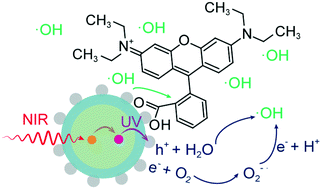
Environ. Sci.: Nano, 2020,7, 3333-3342
https://doi.org/10.1039/D0EN00670J
Alleviation of nitrogen stress in rice (Oryza sativa) by ceria nanoparticles
This study explored the potential of ceria nanoparticles (CeO2 NPs) to alleviate stress in hydroponic rice caused by low N (LN) and high N (HN) stresses.
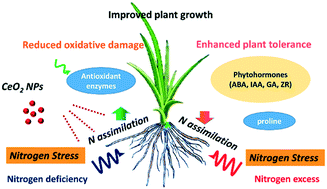
Environ. Sci.: Nano, 2020,7, 2930-2940
https://doi.org/10.1039/D0EN00757A
Enhanced sieving of cellulosic microfiber membranes via tuning of interlayer spacing
Functionally active membranes made of cellulosic microfibers (CMFs) have emerged as promising sorbents for the removal of nano-sized pollutants from water.
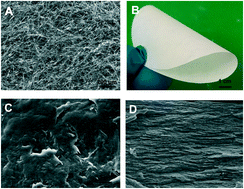
Environ. Sci.: Nano, 2020,7, 2941-2952
https://doi.org/10.1039/D0EN00613K
Joint impact of atmospheric SO2 and NH3 on the formation of nanoparticles from photo-oxidation of a typical biomass burning compound
The joint effects of SO2 and NH3 obviously promote the nanoparticles formation from the photooxidation of 3-methylfuran.
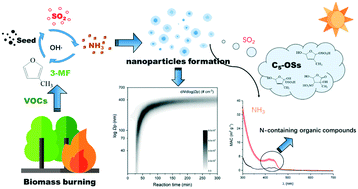
Environ. Sci.: Nano, 2020,7, 2532-2545
https://doi.org/10.1039/D0EN00520G
Facet-dependent reductive dissolution of hematite nanoparticles by Shewanella putrefaciens CN-32
The hematite {001} possessed more adsorption sites, more positive redox potential, and higher conductivity than {100}, resulting that the dissimilatory iron reduction rate of hematite {001} by S. putrefaciens CN-32 was easier than that of {100}.
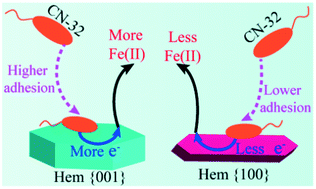
Environ. Sci.: Nano, 2020,7, 2522-2531
https://doi.org/10.1039/D0EN00555J
A 3D soil-like nanostructured fabric for the development of bacterial biofilms for agricultural and environmental uses
Creation of beads-and-fibres 3D nanoscaffolds mimicking the typical architecture of soils at microscale and nanoscale for the development of bacterial biofilms for agricultural and environmental applications.
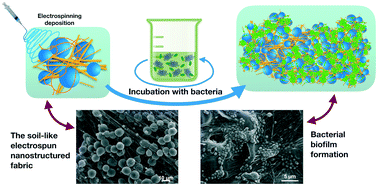
Environ. Sci.: Nano, 2020,7, 2546-2572
https://doi.org/10.1039/D0EN00268B
Relevance of formation conditions to the size, morphology and local structure of intrinsic plutonium colloids
Fundamental knowledge about plutonium intrinsic colloids is a key issue for the prediction of plutonium transport and release rates in the environment.
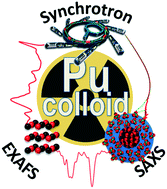
Environ. Sci.: Nano, 2020,7, 2252-2266
https://doi.org/10.1039/D0EN00457J
Indium-modified Ga2O3 hierarchical nanosheets as efficient photocatalysts for the degradation of perfluorooctanoic acid
Indium-modified Ga2O3 hierarchical nanosheet was proved to be an efficient and promising photocatalyst for the removal of perfluorooctanoic acid in aqueous environment.
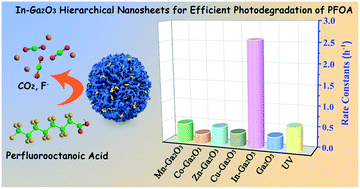
Environ. Sci.: Nano, 2020,7, 2229-2239
https://doi.org/10.1039/D0EN00259C
Hydrogen bonding rather than cation bridging promotes graphene oxide attachment to lipid membranes in the presence of heavy metals
GO first binds with metals, and GO–metal complexes attach to SSLBs via hydrogen bonding through GO rather than cation bridging through metals.
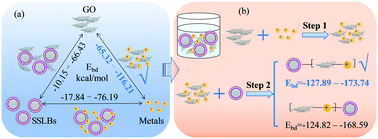
Environ. Sci.: Nano, 2020,7, 2240-2251
https://doi.org/10.1039/D0EN00366B
Stable Zn isotopes reveal the uptake and toxicity of zinc oxide engineered nanomaterials in Phragmites australis
The Zn stable isotope composition of plants demonstrates that ZnO engineered nanomaterials dissolve before their uptake and accumulation by the roots (brightest inclusions in root cortex).
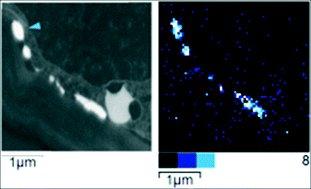
Environ. Sci.: Nano, 2020,7, 1927-1941
https://doi.org/10.1039/D0EN00110D
Polyacrylic acid coated nanoparticles elicit endothelial cell apoptosis and diminish vascular relaxation in ex vivo perfused iliac arteries of the cane toad (Rhinella marina)
Cane toad iliac arteries were perfused ex vivo with polyacrylic acid coated nanoparticles. Nanoparticle uptake was observed in both endothelial and vascular smooth muscle cells, eliciting endothelial cell apoptosis and diminished vascular relaxation.
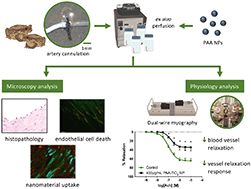
Environ. Sci.: Nano, 2020,7, 1912-1926
https://doi.org/10.1039/D0EN00229A
Criteria of active sites in nonradical persulfate activation process from integrated experimental and theoretical investigations: boron–nitrogen-co-doped nanocarbon-mediated peroxydisulfate activation as an example
Reliable criteria for identifying the intrinsic active sites in carbocatalysts to mediate an electron-transfer mechanism in persulfate activation are presented.
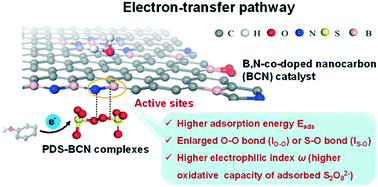
Environ. Sci.: Nano, 2020,7, 1899-1911
https://doi.org/10.1039/D0EN00347F
Development and application of a ratiometric nanosensor for measuring pH inside the gastrointestinal tract of zooplankton
The pH in the anterior gut of Daphnia magna is more than 2 pH units lower than the cultural medium.
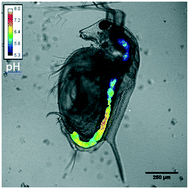
Environ. Sci.: Nano, 2020,7, 1652-1660
https://doi.org/10.1039/C9EN01300H
Toxicity of single-walled carbon nanotubes (SWCNTs): effect of lengths, functional groups and electronic structures revealed by a quantitative toxicogenomics assay
Single-walled carbon nanotubes (SWCNTs) have caused increasing public concerns associated with their potential toxicological effects. This study demonstrated that the physicochemical properties of SWCNTs have impacts on their toxicological effects.
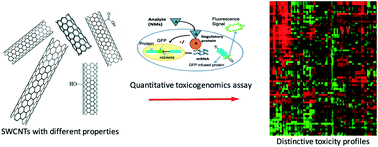
Environ. Sci.: Nano, 2020,7, 1348-1364
https://doi.org/10.1039/D0EN00230E
Formation of Fe(III)–As(V) complexes: effect on the solubility of ferric hydroxide precipitates and molecular structural identification
Soluble Fe(III)–As(V) complexes were found at both acidic and neutral conditions, which significantly change the solubility of ferric oxides.
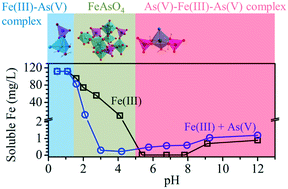
Environ. Sci.: Nano, 2020,7, 1388-1398
https://doi.org/10.1039/D0EN00024H
Nuclear translocation of silver ions and hepatocyte nuclear receptor impairment upon exposure to silver nanoparticles
Upon exposure to non-toxic concentration of silver nanoparticles, only the ionic form of silver is found in the nucleus leading to an endocrine disruptor-like effect.
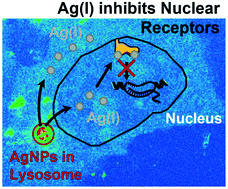
Environ. Sci.: Nano, 2020,7, 1373-1387
https://doi.org/10.1039/C9EN01348B
Hierarchically porous electrospun nanofibrous mats produced from intrinsically microporous fluorinated polyimide for the removal of oils and non-polar solvents
An electrospun nanofibrous adsorbent with micro-, meso- and macropores and surface area of 565 m2 g−1 was developed for the rapid removal of crude oil from seawater.
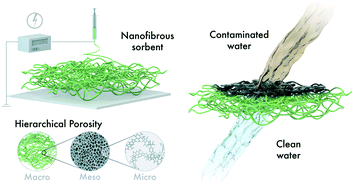
Environ. Sci.: Nano, 2020,7, 1365-1372
https://doi.org/10.1039/D0EN00084A
Efficient extraction of slowly-released Cr(VI) from nano-sized ion channels in Cr(VI)–ettringite from reduced chromite ore processing residue
Complete extraction of Cr(VI) from rCOPR which involved ion exchange in ion channels of Cr(VI)–ettringite, formation and growth of nano-CaCO3.
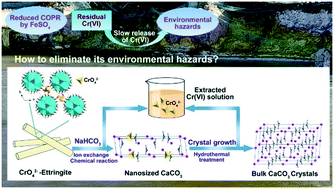
Environ. Sci.: Nano, 2020,7, 1082-1091
https://doi.org/10.1039/D0EN00074D
Emerging investigator series: ion diffusivities in nanoconfined interfacial water films contribute to mineral carbonation thresholds
Mineral carbonation reactivity trends and thresholds in nanoconfined water films delineated with in situ X-ray diffraction and molecular simulations.
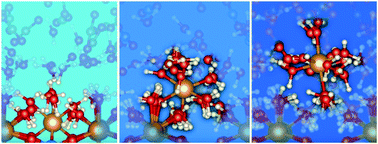
Environ. Sci.: Nano, 2020,7, 1068-1081
https://doi.org/10.1039/C9EN01382B
Underlying mechanisms of reactive oxygen species and oxidative stress photoinduced by graphene and its surface-functionalized derivatives
Graphene can be modified by different functional groups through various transformation processes in the environment.
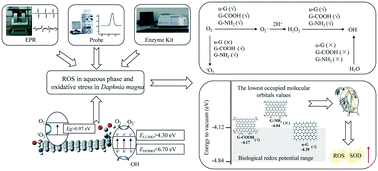
Environ. Sci.: Nano, 2020,7, 782-792
https://doi.org/10.1039/C9EN01295H
A 3D net-like structured fluorescent aerogel based on carboxy-methylated cellulose nanofibrils and carbon dots as a highly effective adsorbent and sensitive optical sensor of Cr(VI)
A 3D net-like structured fluorescent aerogel as a highly effective adsorbent and sensitive optical sensor of Cr(VI) was fabricated.

Environ. Sci.: Nano, 2020,7, 773-781
https://doi.org/10.1039/C9EN01394F
A direct Z-scheme ZnS/Co9S8 heterojunction-based photoelectrochemical sensor for the highly sensitive and selective detection of chlorpyrifos
A direct Z-scheme ZnS/Co9S8 heterojunction-based photoelectrochemical sensor for analyzing organophosphorus chlorpyrifos.
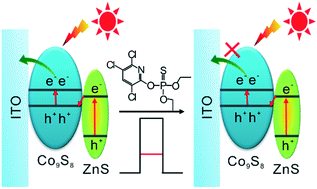
Environ. Sci.: Nano, 2020,7, 753-763
https://doi.org/10.1039/C9EN01265F
Vertically-aligned growth of CuAl-layered double oxides on reduced graphene oxide for hybrid capacitive deionization with superior performance
Designing vertically-aligned CuAl-layered double oxide grown on reduced graphene oxide for capacitive desalination with high capacity and long cycling life.

Environ. Sci.: Nano, 2020,7, 764-772
https://doi.org/10.1039/C9EN01238A
Response of soil enzyme activity and bacterial community to black phosphorus nanosheets
Evaluation of BP nanosheets' impact on the soil ecological environment is important for their safe application and discharge.
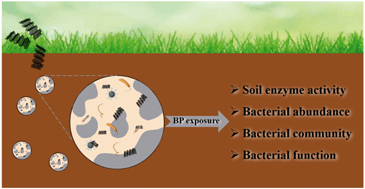
Environ. Sci.: Nano, 2020,7, 404-413
https://doi.org/10.1039/C9EN00716D
Facile passivation of black phosphorus nanosheets via silica coating for stable and efficient solar desalination
BP nanosheets were passivated by forming a double-layer silica shell that was subsequently used for solar desalination.
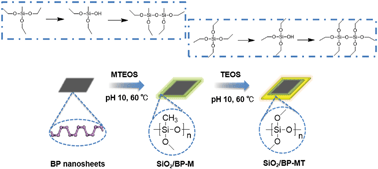
Environ. Sci.: Nano, 2020,7, 414-423
https://doi.org/10.1039/C9EN01138B
Carbon dioxide binding in supercooled water nanofilms on nanominerals
Moist CO2-bearing air flowing in Earth's terrestrial environments and now warming cryosphere can be captured by thin nanometric water films supported by mineral nanoparticles.
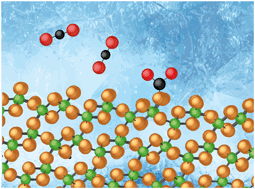
Environ. Sci.: Nano, 2020,7, 437-442
https://doi.org/10.1039/C9EN01137D
Smectite clay pillared with copper complexed polyhedral oligosilsesquioxane for adsorption of chloridazon and its metabolites
Copper complexed polyhedral oligomeric silsesquioxane pillared smectite clay (Cu2+@POSS_SWy-2) exhibits excellent adsorption properties for chloridazon and its metabolites.

Environ. Sci.: Nano, 2020,7, 424-436
https://doi.org/10.1039/C9EN00974D
CdS nanoparticles in soil induce metabolic reprogramming in broad bean (Vicia faba L.) roots and leaves
Plants reprogram the profiles of the antioxidative defense system to alleviate CdS nanoparticle-induced toxicity, at the cost of carbon and nitrogen assimilation.
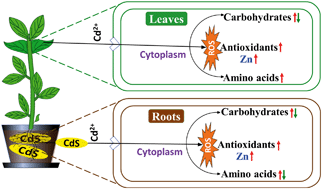
Environ. Sci.: Nano, 2020,7, 93-104
https://doi.org/10.1039/C9EN00933G
Photosynthetic response mechanisms in typical C3 and C4 plants upon La2O3 nanoparticle exposure
Herein, the photosynthesis of C3 and C4 plants was found to display different regulatory strategies under exposure to La2O3 NPs.
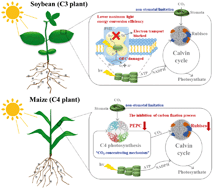
Environ. Sci.: Nano, 2020,7, 81-92
https://doi.org/10.1039/C9EN00992B
Interfacial reactions of Cu(II) adsorption and hydrolysis driven by nano-scale confinement
Spatial confinement of silica surfaces leads to increased polymerization of adsorbed copper(II) species.
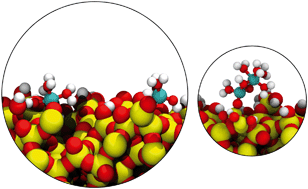
Environ. Sci.: Nano, 2020,7, 68-80
https://doi.org/10.1039/C9EN00855A
About this collection
Browse the cover art from recent issues of Environmental Science: Nano, and read the science behind the images!
Click here to return to the journal homepage